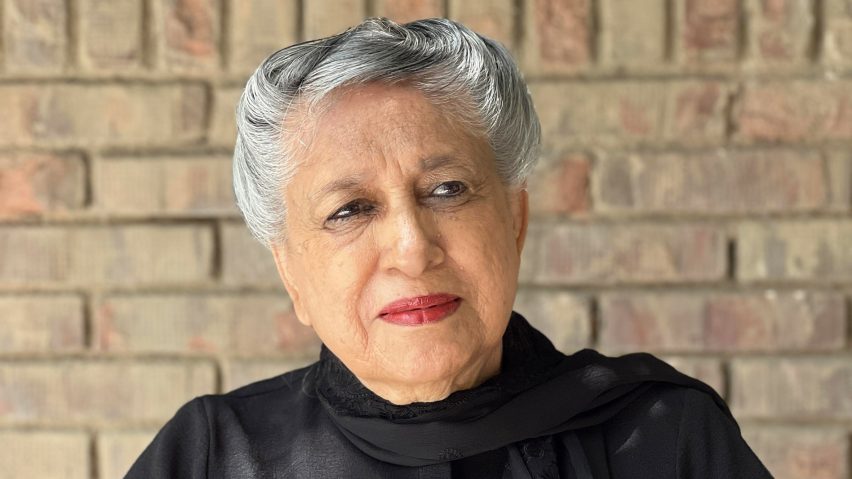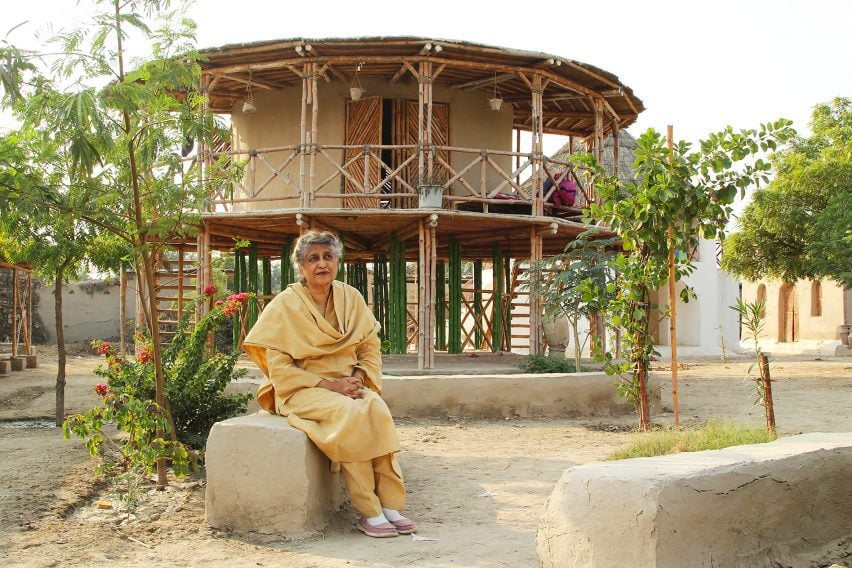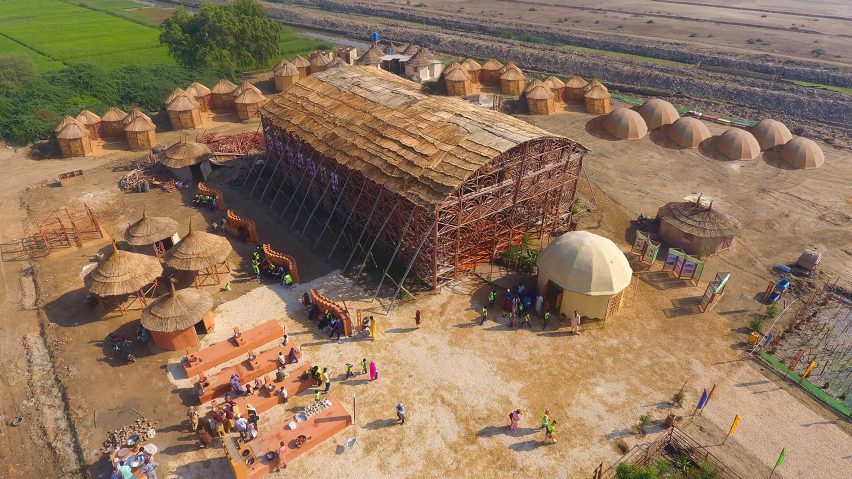
"We cannot design just to please our clients anymore" says Yasmeen Lari
Architects must stop waiting for commissions from wealthy clients and prioritise designing for the planet, says RIBA Royal Gold Medal winner Yasmeen Lari in this exclusive interview.
Speaking to Dezeen from her home in Pakistan, Lari said she hopes her Royal Institute of British Architects (RIBA) Royal Gold Medal win, announced today, can encourage other architects to use their skills to alleviate crises such as climate change.
"The future of the planet is in our hands," Lari told Dezeen. "Architects have a very important role to play and we cannot design just to please our clients anymore or just to please ourselves."

"The planet is far bigger and far more important than any one of us. When we design, we really have to be feeling the Earth in some way, we cannot continue to inflict damage on it."
Lari becomes the sixth woman and second sole female to ever win the prestigious accolade, presented by King Charles III this year for the first time.
The selection committee praised Lari for her "focus on architecture as a complete and vital social, cultural, economic and aesthetic model".
"An architect's role should be more of an activist"
Lari is best known for what she calls "barefoot social architecture", which focuses on improving the lives of disadvantaged communities through low-cost, low-carbon, zero-waste materials and building technologies.
She believes the award reflects a positive change in attitude towards this humanitarian brand of architecture, which people originally thought she was "a bit crazy" for pursuing.
"I never even imagined that what I was doing, which is so different and wasn't taken very seriously, would be considered as a legitimate way for an architect to be doing things," she explained.
Lari spent much of her career designing large buildings for major corporate clients as part of her own studio before retiring in 2000 to specialise in humanitarian work.
She explained that this decision was partly down to wanting a change from designing big projects that were all "aiming for the same thing – just to impress everybody".
"I feel that an architect's role should be more of an activist now," Lari reflected.
"If you want to change the world, then you've got to fight it out. Otherwise, you are just driven by what other people want," she continued. "If you believe in something, then you have to be upfront."
"I think [my award recognition] might open up new avenues for a lot of people who might be thinking in the same way," she said.
Specifically, Lari said her hope lies in young people. She believes her "message resonates with them more than others", and that this could see a stream of young architects entering the humanitarian field in the future.
"I'm hoping that this might encourage some of the younger professionals to be able to take that more seriously or on a more kind of more permanent way."
"Unfortunately, we are very lazy"
However, she also acknowledges that encouraging greater uptake of low-carbon and humanitarian architecture will be a challenge.
"Since everybody's affected by the capitalist system, which is all about making profits, and it's all driven by money, I'm not sure if [barefoot social architecture] can ever become mainstream," she explained. "Training is driven towards working for a client and waiting for a commission."
"When you're waiting for a commission it will only come from people who are wealthy, and that means that you have to follow what they're saying."
She said the industry is also plagued by a "lazy" attitude that relies on using readily available and conventional materials such as concrete and steel.

"I think it's a fallacy to think that you can't do without concrete and steel," said Lari.
"We've got to rethink how we want to build," she continued. "I can imagine not everybody will want to use earth or bamboo, but lime can be used by many."
Lime, a material found in much of Lari's work, was commonly used by the Romans as an ingredient in concrete and is capable of continually absorbing carbon from the atmosphere.
"Architects are not looking at [alternative materials] because none of these commercial companies giving you all those leaflets [are manufacturing them]," she said.
"Unfortunately, we are very lazy," she continued. "We just want to look at something and just have it ready for us. We have to now organise ourselves for the ones who really care."
"Level playing field" for women still needed
Aside from her work in humanitarian architecture, Lari is also well-known as Pakistan's first female architect.
She believes that her RIBA Royal Gold Medal win today is a reflection of improvements in the industry's gender balance and acknowledgement of the value of women in architecture.
"I think it's a very brave decision that RIBA, and all the people instrumental in making this decision, have made," she said.
"I think there is a realisation that women have a role to play, that there is something of value that they can also offer," she added. "Women can make a contribution that may be different from what men can do."
In her home country of Pakistan, she said, this is particularly evident.
"In Pakistan there are many female architects now who are doing extremely well," she explained. "So I think the gender bias, perhaps at the professional level, is not so evident."
However, this progress does not mean the industry can take its foot off the pedal when it comes to "creating a level playing field" she said.
"I think there's still bias because [women] don't seem to be able to do as well as men. When it's a matter of large commissions, that's where they really lose out," she explained.
Lari believes that recognising more women in awards is one of the ways to overcome this inequality.
"I think the more women there are that are visible, the more there are around, the more that are known, I think will help the younger professionals, and that's what I really want," concluded Lari.
"I want the younger generations to do better than we were able to do. That's the only way things will become better."
Awarded annually since 1848 and personally approved by the monarch, the RIBA Royal Gold medal is the highest accolade in UK architecture. The 2022 laureate was Balkrishna Doshi, who passed away earlier this year.
Previous winners include David Adjaye, Frank Lloyd Wright and Zaha Hadid – the first sole female winner of the prize. Other women architects to have won the prize include Ray Eames, Patricia Hopkins, Sheila O'Donnell and Grafton Architects founders Shelley McNamara and Yvonne Farrell.
The top photo of Lari is by Anam Baig. The other photography is courtesy of Yasmeen Lari.
Dezeen in Depth
If you enjoy reading Dezeen's interviews, opinions and features, subscribe to Dezeen In Depth. Sent on the last Friday of each month, this newsletter provides a single place to read about the design and architecture stories behind the headlines.